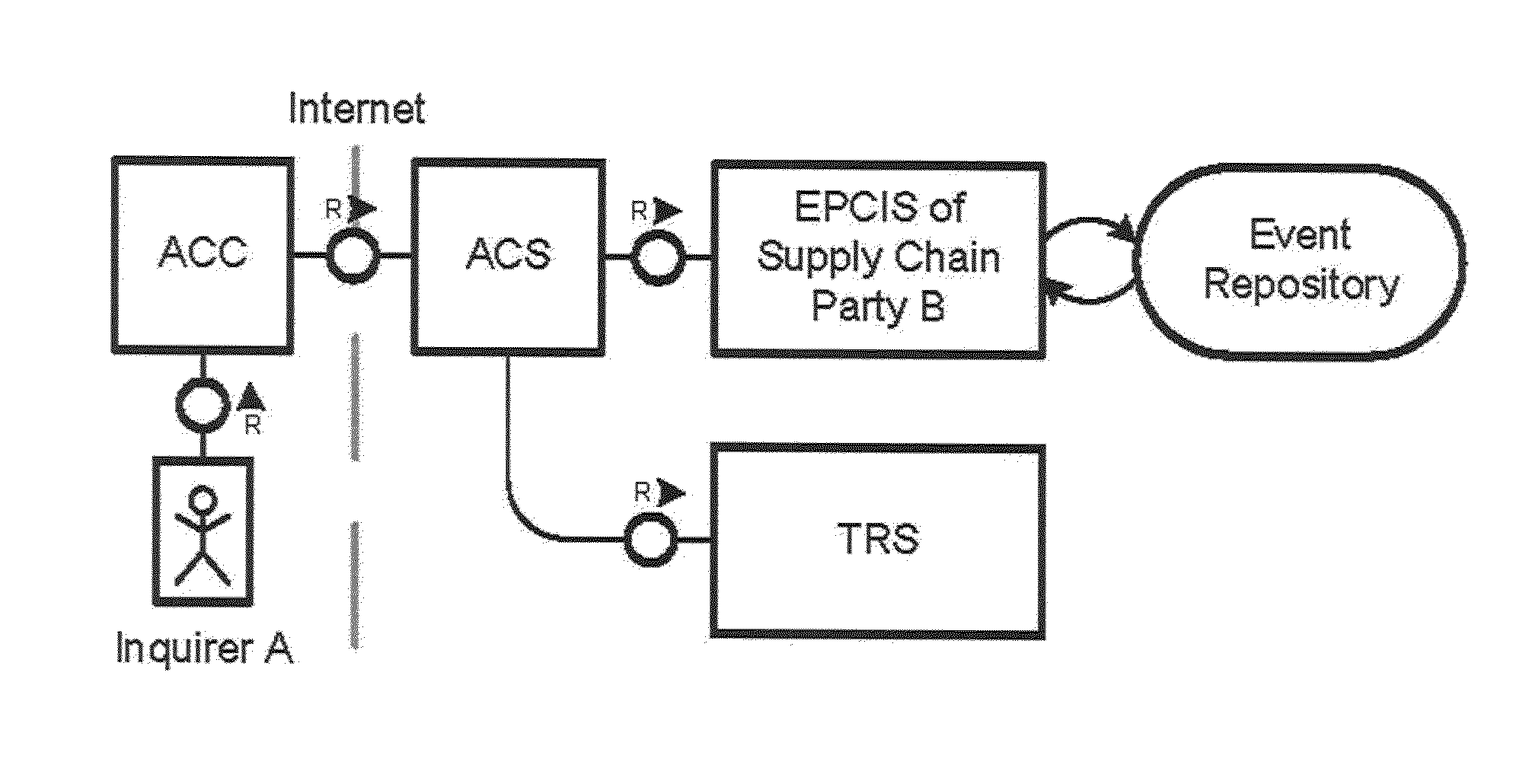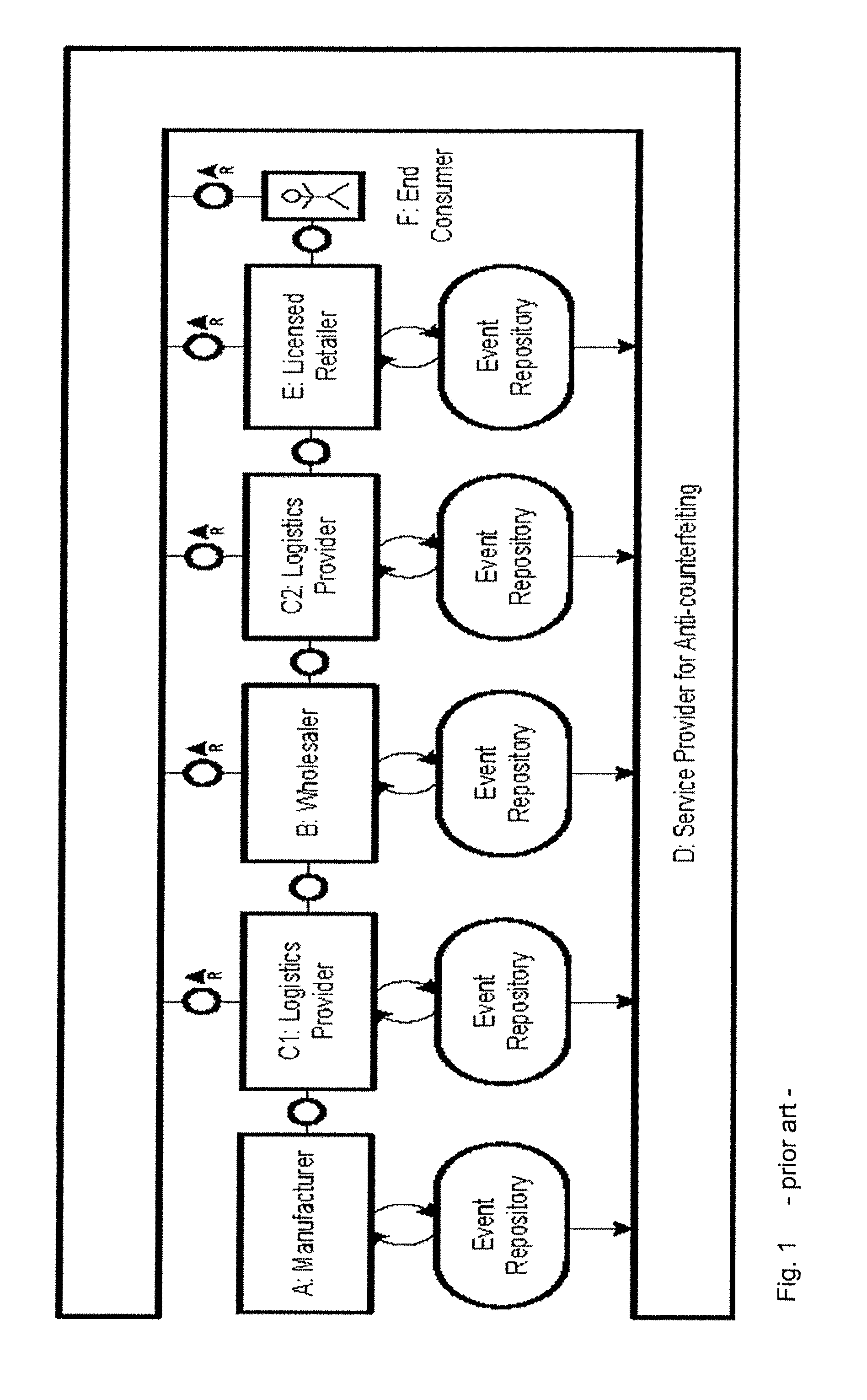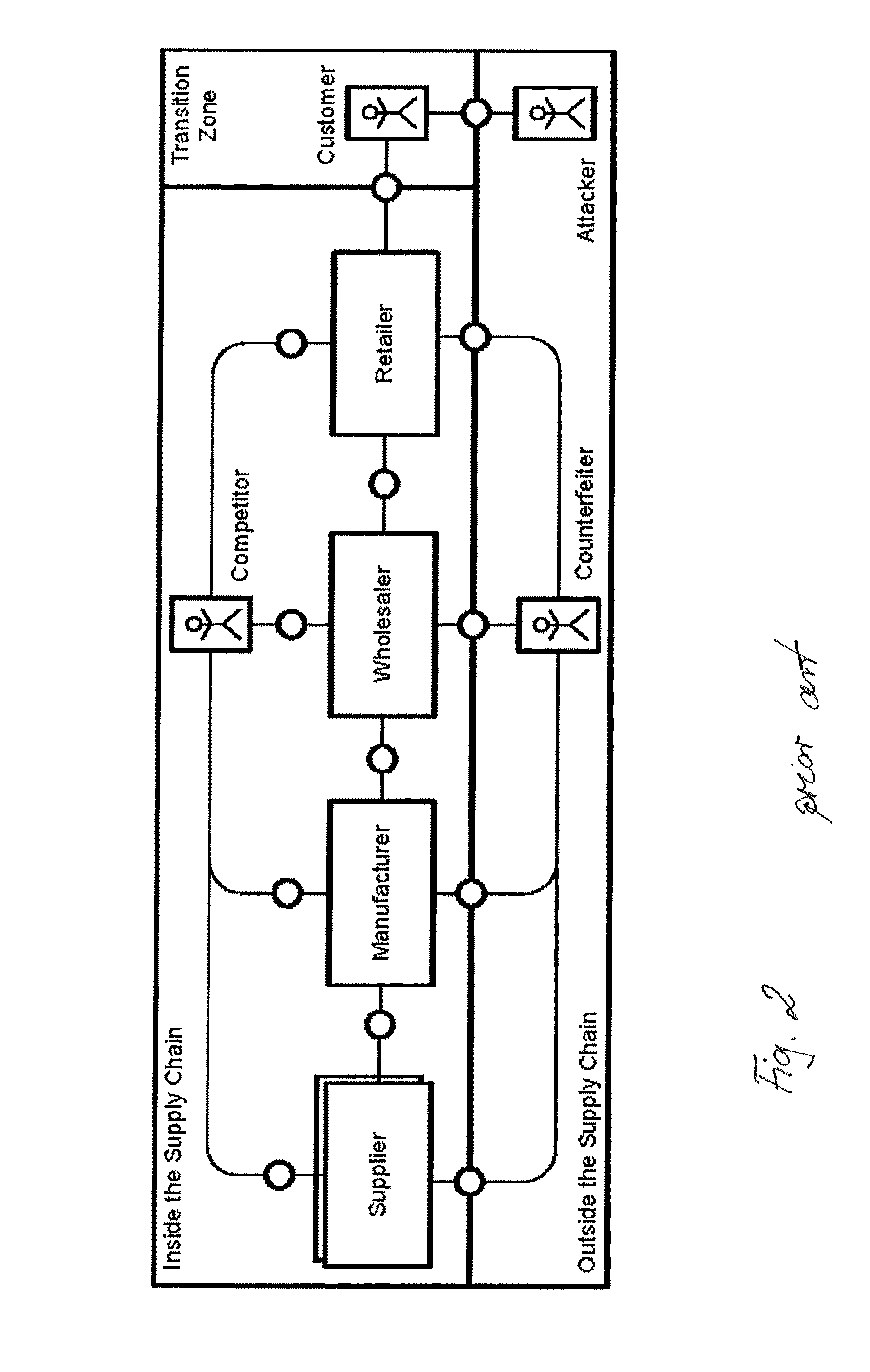Transparent Control of Access Invoking Real-time Analysis of the Query History
a technology of access control and query history, applied in the direction of transmission, structured data retrieval, computer security arrangements, etc., can solve the problems of limiting factors, certain security risks, and current businesses facing continuously challenging factors
- Summary
- Abstract
- Description
- Claims
- Application Information
AI Technical Summary
Benefits of technology
Problems solved by technology
Method used
Image
Examples
Embodiment Construction
[0251]FIG. 8 shows an interaction of history based access control (HBAC) actors to combine RBAC and RuBAC for decision taking. The actors are an inquirer A, an Access Control Client ACC, a repository EPCIS comprising an Event repository and a Trust Relationship Server TRS (also referred to as trust server). According to the invention, HBAC may be implemented as business-level extensions for event repositories, as shall be explained next.
Business-level Extensions for Event Repositories
[0252]We refer to HBAC as all access control mechanisms that store a complete history of queries, analyze it, and perform decision taking based on its evaluations. HBAC according to an aspect of the invention is designed for extension of current EPCIS implementations. With respect to Hypothesis 2, the following requirements are considered to control data access:[0253]User Authentication: Identify the inquirer and protocol, who is querying data from the EPCIS repository,[0254]Access Rights: Enforce, whic...
PUM
 Login to View More
Login to View More Abstract
Description
Claims
Application Information
 Login to View More
Login to View More - R&D
- Intellectual Property
- Life Sciences
- Materials
- Tech Scout
- Unparalleled Data Quality
- Higher Quality Content
- 60% Fewer Hallucinations
Browse by: Latest US Patents, China's latest patents, Technical Efficacy Thesaurus, Application Domain, Technology Topic, Popular Technical Reports.
© 2025 PatSnap. All rights reserved.Legal|Privacy policy|Modern Slavery Act Transparency Statement|Sitemap|About US| Contact US: help@patsnap.com



